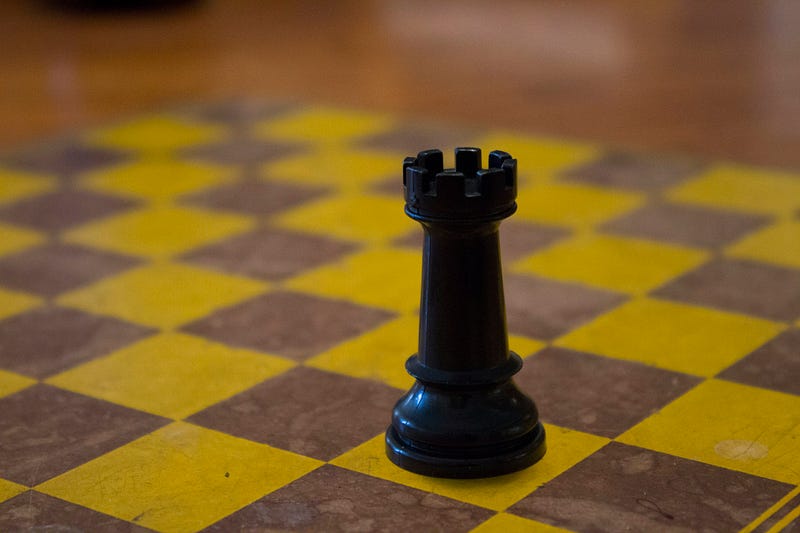Chess: The Hidden Training Ground for Software Engineers
 Pier-Jean Malandrino
Pier-Jean Malandrino
Photo by Benjamin Smith on Unsplash
In the field of professional development, software engineers are constantly looking for different ways to improve their skills. While coding challenges and system design exercises are commonly used, this paper explores a less conventional, yet potentially more effective avenue for skill enhancement: the game of chess. Rather than focusing on the widely recognised cognitive benefits of chess, we will examine how this time-honoured game can specifically enhance your skills as a software engineer.
1. Chess: A Historical Training Ground
First, some history, chess has often been seen as a brain training tool.

Photo by Giammarco Boscaro on Unsplash
Chess comes from India. It was called Chaturanga during the Gupta Empire. The term reflects its social context. Chaturanga means “four limbs” and represents the four branches of the Indian military: infantry, cavalry, elephants, and chariots.
Chess has been used as a way of teaching strategy to the nobility. Each piece represents a military unit working towards a common goal. In medieval Europe, chess was seen as one of the “seven knightly skills”.
The game’s journey across continents shaped its role as a teaching tool. From India, chess traveled to Persia, becoming shatranj, and then reached Europe when the Moors entered Spain. In medieval Europe, the game grew beyond its military roots. Courts and monasteries used it to teach strategic thinking to future leaders.
Courts and monasteries used it to teach strategic thinking to future leaders.
When chess crossed the Atlantic, it found a strong supporter in Benjamin Franklin. As one of America’s founding fathers, Franklin saw chess as more than entertainment. He wrote about how chess builds the mind, teaching players to think ahead and consider all options before acting. In his writings from 1786 “The Moral of Chess”, he explained how chess helps develop careful thinking and good judgment — skills he believed were vital for leadership.This view of chess as a tool for developing strategic thinking continues today.
The game has evolved from its ancient origins, but its core purpose remains: teaching players how to think strategically and make careful decisions.
Teaching players how to think strategically and make careful decisions.
2. Strategic Vision and Pattern Recognition
Setup your intuition by long term working

Photo by Dave Photoz on Unsplash
2.1. In Chess
Strong chess players calculate fast, but they don’t look at every move. Through years of practice, they learn which moves deserve attention. They build a mental database of positions and patterns that helps them filter good ideas from bad ones.This works on two levels:
Tactics: Finding immediate threats and opportunities through short (well, short isn’t the same for everybody..) combinations
Strategy: Understanding if a position is promising without calculating every variation, have a long term plan.
Magnus Carlsen shows this perfectly. He talks about “feeling” where pieces belong. This feeling isn’t magical — it comes from thousands of hours studying and playing. Raw talent helps, but experience builds this intuition.
2.2. In Software Engineering
Software architects work the same way. After years of building systems, they:
Quickly spot common problems in designs
Know which solutions usually work
Focus their analysis time on the real challenges
Skip wasting time on options they know will fail
Chess training speeds up this learning. It teaches you to mix quick pattern matching with deep analysis. This is exactly what good architects do every day.
e.g: when facing a scaling problem, experienced architects don’t analyze every possible solution. They quickly identify patterns from past experiences or their knowledge and focus only on the most promising approaches. Just like a chess player doesn’t calculate every possible move, but focuses on the moves that their experience suggests might work.
They quickly identify patterns from past experiences or their knowledge and focus only on the most promising approaches.
3. Decision Making Under Pressure
Train your mind for critical choices

Photo by Happy Lee on Unsplash
3.1. In Chess
Recent studies have demonstrated that time pressure has a significant impact on how players assess risk. In situations where time is limited, players tend to make safer moves, particularly in situations where a win is essential. Each decision carries significant weight and consequence. Once a piece is released, it cannot be retrieved. The difficulty is compounded by the fact that it is not possible to calculate all potential outcomes, yet a decision must be made.
Blitz chess is an effective method for honing this particular skill. In the limited time available, it is essential that players rely on their judgement and make prompt decisions. Although this may appear to be a risky strategy, regular blitz practice has been shown to enhance decision-making abilities under pressure.
If you are crazy enough, you can even go for Bullet chess !
3.2. In Software Engineering
Similarly, software architects are required to make decisions under pressure. When selecting technology stacks or making pivotal design decisions, they frequently contend with:
Tight project deadlines
Incomplete requirements
Changing business needs
Limited resources
Similar to chess players, architects must commit to decisions that will impact their project for many moves ahead. The parallel is evident — both roles necessitate swift, assured decisions based on incomplete information.
Chess training fortifies this capability. It provides a controlled environment where you can practice high-stakes decision-making repeatedly, building the mental toughness needed for critical architectural choices.
A controlled environment where you can practice high-stakes decision-making repeatedly
4. Time Management and Resource Allocation
Balance analysis and action

Photo by Artyom Kabajev on Unsplash
4.1. In Chess
Time management often decides games more than perfect moves do. Players get a fixed amount of time to make all their decisions. Spending too much time early leaves you vulnerable later — a situation Germans call “zeitnot” (time trouble). Even grandmasters lose games not because they chose wrong moves, but because they ran out of time to find right ones.
Good players develop a sense for:
Which positions need deep analysis
When to trust quick evaluations
How to keep enough time for late-game complications
Managing their clock throughout the game
4.2. In Software Engineering
Technical projects face the same time management challenges. Teams must balance:
Deep technical analysis
Quick practical decisions
Project deadlines
Market timing
Over-analyzing early design choices can drain time needed for crucial later stages. Just as chess players must avoid zeitnot, development teams must avoid analysis paralysis or rush times which every team has experienced.
Chess practice builds this time management instinct. It teaches you when to dive deep and when to move forward with good-enough solutions. This skill transfers directly to managing software project timelines and resources.
It teaches you when to dive deep and when to move forward
5. Learning from Mistakes
Build experience through failure analysis

Photo by Nandhu Kumar on Unsplash
5.1. In Chess
Chess punishes mistakes harshly — one bad move can ruin hours of good play. However, this harsh feedback system makes learning crystal clear. Modern chess engines like Stockfish have transformed how players learn from mistakes. After each game, players can:
See exactly where they went wrong
Understand what they missed
Explore better alternatives
Learn from stronger moves suggested by the engine
Top players spend a lot of time analyzing their games. They use engines not just to find mistakes, but to understand why certain moves work better than others. This objective feedback helps build pattern recognition and improves decision-making for future games.
5.2. In Software Engineering
Software mistakes might take longer to surface, but their impact can be just as significant. Like chess players using engines, developers have tools to analyze and improve their work:
Code reviews
Performance monitoring
System diagnostics
Post-incident analysis
The chess approach to mistake analysis transfers well to software development. Just as players learn from engine analysis, developers learn from production issues and code reviews.
Both fields require:
Honest assessment of mistakes
Systematic analysis of what went wrong
Clear understanding of better alternatives
Regular practice of improvement cycles
Chess training builds comfort with this feedback loop. It teaches you to see mistakes not as failures, but as valuable learning opportunities — a mindset crucial for software development growth.
See mistakes not as failures, but as valuable learning opportunities
Conclusion
While traditional coding challenges and system design exercises remain valuable, chess offers a unique and powerful addition to a software engineer’s skill development toolkit. The combination of strategic thinking, decision-making under pressure, resource management and an emphasis on learning from mistakes provides a comprehensive training ground that closely mirrors the challenges faced in software engineering.
By integrating chess into yout professional development, you engineers can enhance your cognitive abilities, strategic thinking, and decision-making skills, which directly benefit your work.
As the field of software engineering continues to evolve and face increasingly complex challenges, the timeless wisdom and mental discipline offered by chess may prove to be an invaluable asset for those looking to excel in their careers.
Subscribe to my newsletter
Read articles from Pier-Jean Malandrino directly inside your inbox. Subscribe to the newsletter, and don't miss out.
Written by
